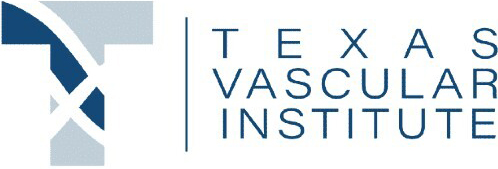By: Dr. Dev Batra | 01.29.23
Vein disease is a progressive circulatory system condition. Fortunately, there are options available to treat the various stages and restore your circulatory health.
At Texas Vascular Institute, interventional radiologist Dr. Dev Batra and his staff are well-versed in vein issues, the problems they cause, and the treatments that help resolve them. Here’s what they want you to know about vein disease and what to do if it impacts you.
The veins’ role in circulation
Your circulatory system delivers oxygenated blood to your body’s tissues and returns deoxygenated blood back to the lungs and heart. Arteries perform the former function, while veins perform the latter.
One issue with the return trip, though, is that the blood has to fight against the pull of gravity. To compensate, the calf muscles contract to force the blood forward, and the veins have a series of one-way valves that snap shut once blood flows through.
If the vein walls weaken, or if the valves become damaged, blood can flow back toward the legs and feet, pooling around the weakened or damaged area.
If the problem isn’t treated, the condition turns chronic, becoming what’s known as chronic venous insufficiency (CVI). It affects about 40% of adults in the United States. While CVI’s manifestations can simply be cosmetic, they may also lead to leg pain, swelling, or skin ulceration that’s slow to heal or won’t heal at all. It also puts you at risk for deep vein thrombosis (DVT).

Chronic vein disease stages
If not treated, vein disease can progress and become a chronic problem with multiple stages. These include:
Chronic venous insufficiency
As we’ve mentioned, the first stage of vein disease occurs with damaged valves that allow blood that should be going to the heart to pool around the damaged area, impeding normal circulation.
Spider veins
Spider veins are medically known as telangiectasia. These widened venules or reticular veins (small rope-like veins) form in patterns similar to a spider’s web on the skin’s surface, as the increased venous pressure stresses the vein’s wall.
Varicose veins
Spider veins can give way to varicose veins as the pressure grows and the larger veins become affected. These large, twisted swellings against the skin’s surface may be mostly an eyesore, or they can produce pain, itchiness, swelling, and an aching heaviness in the legs. They can also lead to deep vein thrombosis, a much more serious condition.
Deep vein thrombosis
Unlike varicose veins, which affect surface veins, DVT affects veins deep in the tissue. If a clot forms in these veins, it can break free and travel to the lungs, where it may cause a life-threatening pulmonary embolism (PE). As many as 30% of the 900,000 or so Americans who have DVT will die from it within the first month following diagnosis.
Edema
If chronic vein disease is not treated, the veins will begin to leak, causing edema (swelling) in the area around the weakened vein. If you press on the skin, you’ll notice an indentation from the fluid buildup.

Venous stasis dermatitis
The next stage of vein disease affects the skin’s appearance over the affected veins. Most commonly, you’ll notice a brown or red discoloration around your lower legs and ankles. The coloration comes from hemosiderin deposits, a breakdown product of the hemoglobin molecule that transports oxygen. You may also see shiny, scaly, or thickened skin, as well as skin scarring.
Venous ulcers
Venous ulcers are easy to identify — they’re open sores surrounded by discolored or hardened skin. They are usually located on the lower leg or ankle. The base of the ulcer usually appears red. If infected, the ulcer can produce a large amount of pus, and when manipulated, the ulcer oozes venous blood. While the sore is relatively painless, people may experience pain from related edema or infection.
The main problem with ulcers is that they’re slow to heal, which means they may easily become infected, especially for diabetics.
At Texas Vascular Institute, Dr. Batra treats vein disease at the source — malfunctioning veins. Treatments he uses include:
- VenaSeal™: injects adhesive into the problem vein to seal it shut. Blood shunts to different, healthy veins
- ClosureFast™: uses specialized tool to deliver radiofrequency (RF) impulses to the diseased vein, causing it to collapse
- Ultrasound-guided foam sclerotherapy: injects diseased veins with a solution that irritates and withers your vein. Ultrasound makes standard sclerotherapy more precise
If you’re having any symptoms of vein disease, or you think an examination may be necessary, call Texas Vascular Institute at 972-646-8346 to set up a consultation with Dr. Batra or book online.
Read more blogs
Varicose Veins in Hurst: Expert Care at Your Doorstep
At Texas Vascular Institute (TVI), we empathize with the discomfort and worry caused by varicose veins. That's why we're here in Hurst, providing cutting-edge treatments that are customized to address your unique needs. With our team of experts wielding extensive knowledge and experience, we promise to provide the utmost care in a warm and compassionate atmosphere. Let us help you find relief and regain your confidence!
Varicose Veins in Dallas: Quality Care You Can Trust
Our exceptional team of vascular specialists are true leaders in their field, armed with years of invaluable experience. Harnessing the power of cutting-edge advancements in vein treatment, they've transformed the lives of numerous patients, liberating them from the pain and unsightly burden of varicose veins. When you choose TVI, you're opting for unparalleled care and unwavering commitment to your varicose vein needs in Dallas.
How to Get Rid of Varicose Veins in Hurst?
The causes and risk factors of varicose veins vary from genetics to age, pregnancy, obesity, and prolonged standing or sitting, among other factors. Some typical signs and possible issues include discomfort, inflammation, irritation, hemorrhage, dermatological alterations, sores, and thrombosis. You may want to seek medical attention if you experience any of the following symptoms or complications.
WHAT OUR PATIENTS
have to say
Texas Vascular Institute always appreciates feedback from our valued patients. To date, we’re thrilled to have collected 378 reviews with an average rating of 5 out of 5 stars. Please read what others are saying about Texas Vascular Institute below, and as always, we would love to collect your feedback.
Leave a Review
Amazing Practice
I'm very particular with my Healthcare and tend to be cautious with referrals to specialists. This office is amazing from the first point of contact. Their staff are friendly, professional and highly knowledgeable. Then the Dr is just as amazing as his staff, absolutely brilliant. Office manager Jessica has this office running like a well oiled machine and does so with a smile, an air of confidence, kindness and professionalism. Love this practice!!
- Richard G.

Beyond Thankful
Dr Batra and his staff are amazing! We are so grateful to have found him. Everyone is so kind and so caring and Dr Batra explains everything so well and does procedures with excellence. Beyond thankful to be under their care!!!
- Bitsy P.

Gold Standard
This is a gold standard for how a medical practice should be run. I was promptly seen at my scheduled time, my ultrasound was thorough and I received plenty of attention and care from the staff and Dr.Batra.
- Weronika L.
INSURANCE
We accept most major insurance plans. Please contact the medical office for all insurance related questions.









3500 Oak Lawn Ave, #760
Dallas, TX 75219
For Appointments: 972-798-4710
General Inquiries: 972-646-8346

809 West Harwood Rd, Suite 101,
Hurst, TX 76054
For Appointments: 972-798-4710
General Inquiries: 972-646-8346

